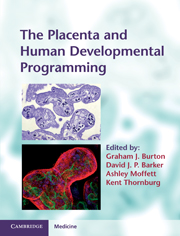Crossref Citations
This Book has been
cited by the following publications. This list is generated based on data provided by Crossref.
Bell, Daniel
and
Radswiki, The
2011.
Radiopaedia.org.
Barker, David J. P.
2012.
Human growth and chronic disease: A memorial to Jim Tanner.
Annals of Human Biology,
Vol. 39,
Issue. 5,
p.
335.
Reynolds, Lawrence P.
and
Caton, Joel S.
2012.
Role of the pre- and post-natal environment in developmental programming of health and productivity.
Molecular and Cellular Endocrinology,
Vol. 354,
Issue. 1-2,
p.
54.
Sharp, Julie A.
Modepalli, Vengama
Enjapoori, Ashwanth Kumar
Bisana, Swathi
Abud, Helen E.
Lefevre, Christophe
and
Nicholas, Kevin R.
2014.
Bioactive Functions of Milk Proteins: a Comparative Genomics Approach.
Journal of Mammary Gland Biology and Neoplasia,
Vol. 19,
Issue. 3-4,
p.
289.
Leese, Henry J.
2014.
Effective nutrition from conception to adulthood.
Human Fertility,
Vol. 17,
Issue. 4,
p.
252.
Rutherford, Julienne N.
deMartelly, Victoria A.
Layne Colon, Donna G.
Ross, Corinna N.
Tardif, Suzette D.
and
Kanellopoulos-Langevin, Colette
2014.
Developmental Origins of Pregnancy Loss in the Adult Female Common Marmoset Monkey (Callithrix jacchus).
PLoS ONE,
Vol. 9,
Issue. 5,
p.
e96845.
Applefield, Pauline F.
2014.
Encyclopedia of Special Education.
Sakar, M. N.
Balsak, D.
Verit, F. F.
Zebitay, A. G.
Buyuk, A.
Akay, E.
Turfan, M.
Demir, S.
and
Yayla, M.
2016.
The effect of Ramadan fasting and maternal hypoalbuminaemia on neonatal anthropometric parameters and placental weight.
Journal of Obstetrics and Gynaecology,
Vol. 36,
Issue. 4,
p.
483.
Longo, Lawrence D.
2018.
The Rise of Fetal and Neonatal Physiology.
p.
153.
Modepalli, Vengamanaidu
Kumar, Amit
Sharp, Julie A
Saunders, Norman R
Nicholas, Kevin R
and
Lefèvre, Christophe
2018.
Gene expression profiling of postnatal lung development in the marsupial gray short-tailed opossum (Monodelphis domestica) highlights conserved developmental pathways and specific characteristics during lung organogenesis.
BMC Genomics,
Vol. 19,
Issue. 1,
Jakó, Mária
Surányi, Andrea
Kaizer, László
Németh, Gábor
and
Bártfai, György
2019.
Maternal Hematological Parameters and Placental and Umbilical Cord Histopathology in Intrauterine Growth Restriction.
Medical Principles and Practice,
Vol. 28,
Issue. 2,
p.
101.
Thayer, Zaneta M
Rutherford, Julienne
and
Kuzawa, Christopher W
2020.
The Maternal Nutritional Buffering Model: an evolutionary framework for pregnancy nutritional intervention.
Evolution, Medicine, and Public Health,
Vol. 2020,
Issue. 1,
p.
14.





